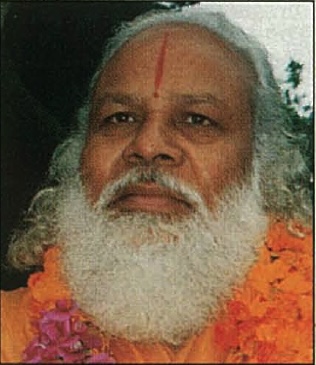By Swami Prakashanand Saraswati
Our holy scriptures originated from God Himself. They were first revealed to the people of Earth by Brahma through the sages and recently by Bhagwan Ved Vyas. They are not the writings of a person, as some assume. They remain in the same form in all the ages. The Sanskrit language came with the scriptures, along with all of its grammar. This fact is mentioned in many places in the Upanishads. The Vedas, Upanishads and Puranas, etc., were received by Brahma from the supreme personality of God, which Brahma conceived of and revealed to the sages the very first day of His life, which is more than 155 trillion years ago. Then it was re-revealed by a decision of God Himself whenever it was needed, or whenever there was destruction of civilization. The latest and last revelation was by Bhagwan Ved Vyas about 5,000 years ago when he rewrote all the scriptures in their original form and taught it to his disciples.
In this way all these scriptures were revealed in the same sequence of time, in a continuous succession, of which the last one was Bhagwatam, which, according to our history, was related to King Parikchit by Paramahans Shukdeo just 30 years after the beginning of the Kali Yuga in 3072 bce. Variation of the style of the language of Samhita, Upanishad and Purana is just their style. It does not mean an earlier or later date of writing. Our Sanskrit grammar is perfect since it first landed on the planet Earth.
The names of rishis and saints that appear in the reference and stories of our scriptures are all eternal saints; eternally they reside in the Divine abodes. They do come on Earth. So, the names of such saints that are mentioned in our scriptures are also eternal. Such a story form of writing is easy to understand for a common person. That’s why the scriptures are eternally made like that. One should not think that if an event is described in a scripture, it should have happened first and then be recorded by someone at a later date. It is not like this.
As regards to divineness of the Sanskrit language, it is self-evident. You don’t light up a torch to see the sun, just open your eyes and see it. But if you close your eyes you can’t see it. Since the first time historians learned about the existence of Sanskrit, they have seen it in the same perfect form up till now, without any “sound shift” or change in “inflection,” as happens to other languages of the world–and all the anthropological linguists know that. In the last 3,000 years there was no genius born who could introduce a perfect grammar like Sanskrit. Even the advanced English language of today only had 3,000 words when its first dictionary was published in 1604. Prior to that it had been through so many transformations since its birth. The oldest prime languages, like Latin and Greek, in their primitive stages had few words, just enough for people to communicate with each other in the community. If you look to the history of these ancient languages of the world, you will find in them varied, slow developments. But the Sanskrit language was perfect from the very beginning. Is there not enough evidence to understand that it is not man made, but a divine gift?
Everyone who learns the Sanskrit grammar knows the intelligence of words that formed from the root word called dhatu. For one single verb there are 90 forms used in its 10 tenses. Even a simple noun or pronoun has 21 forms of the same word. Knowing all that, still, Sir William Jones made a declaration at a 1786 meeting in his own Calcutta society that because some words of Sanskrit, Latin and Greek are similar, there must have been another parent language from where they were borrowed. On his speculation the phrases “Indo-European Language” and “Indo-European people” were introduced, which never existed. Attention of linguists was wrongly toward an unknown side, like looking for water in a desert mirage. Unfortunately, even our Indian writers followed the same gossip and hampered the reputation, authenticity and divineness of our Sanskrit language, and our scriptures as well.
In fact, Sanskrit is the mother language of all other world languages, and the speculated “Indo-European Language” is Sanskrit. The speculated “Indo-European people” are inhabitants of Bharatvarsh, or India, which is also called Aryavat. Thus, it is self evident from the above descriptions that Aryans of Aryavart or Bharatiya of Bharatvarsh are the same.
What happened is that in ancient times, Indian people traveled to neighboring Asian and European countries, settled there and over time almost forgot India. But in local spoken tongues, they held instincts of Sanskrit words of general communication. That’s how, in due course, when languages like Latin, Greek, Celtic and Iranian were developed according to advancement of their own civilizations, they still retained some original Sanskrit words which are reflected in their languages as a similarity of words between Latin, Greek and Sanskrit.
Now we know that Sanskrit originated from India. There is no such thing as a tribe coming to India with a language called Sanskrit, and there is no such thing as a pre-Vedic or pre-Aryan period, as our Vedic literature is the first to appear on Earth. Our scriptures are divine writings, so they cannot be understood by learning Sanskrit grammar and interpreting the words to one’s own style of thinking. They can only be understood with the help of a divine personality.
SWAMI PRAKASHANAND, 69,heads International Society of Divine Love and Barsana Dham in Texas–the largest US Hindu Temple complex. Ayodhya-born, he teaches divine love of Radha-Krishna.
